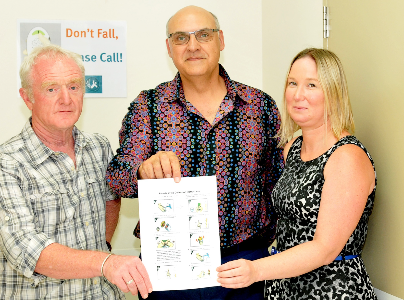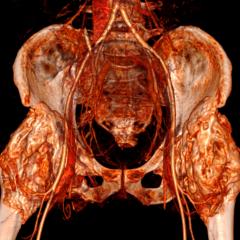
David Toohey, card illustrator,
Chantelle Judge, PAH Clincal Research Nurse.
New University of Queensland research aims to save money being flushed down the drain because of contaminated urine samples.
UQ’s Dr Rob Eley, Academic Research Manager at the Princess Alexandra (PA) Hospital Emergency Department, said contaminated samples increased costs, delayed accurate diagnosis and caused patients additional stress.
“More than 40 per cent of mid-stream urine samples from female patients are contaminated by external bacteria or skin cells,” Dr Eley said.
“In a mid-stream urine sample, the first part of the urine flow is directed into the toilet before the sample is collected.
“Men have the advantage anatomically, it’s much harder for a woman to give a mid-stream urine sample without contamination.
“Although nursing staff provide instructions, they can be easily misunderstood or forgotten, particularly in the stressful environment of an emergency department.”
The PA’s emergency department takes approximately 12,000 urine tests each year and thanks to an Emergency Medicine Foundation grant of more than $26,000, funded by Queensland Health, Dr Eley and his team have a solution to reducing contamination.
“Providing patients an instruction sheet with seven coloured illustrations demonstrating the correct procedure has shown a reduction in sample contamination,” Dr Eley said.
“We tested the illustrated instruction sheet on 120 women presenting at the PA Hospital emergency and compared the results with a control group of 120 patients who did not receive the sheet.
“The number of contaminated urine samples dropped from 40 per cent to just 25 per cent.”
“The illustrated instruction sheets are a simple, inexpensive and effective way to reduce the number of tests that need to be redone – saving time and money.”
The ‘how-to’ sheets are now being introduced in the PA Hospital with hopes for nationwide adoption in hospitals.
They were found to be particularly useful for patients with a non-English speaking background.
Media: Bernadette O’Connor, Bernadette.oconnor@uq.edu.au, +61 431 533 209.



